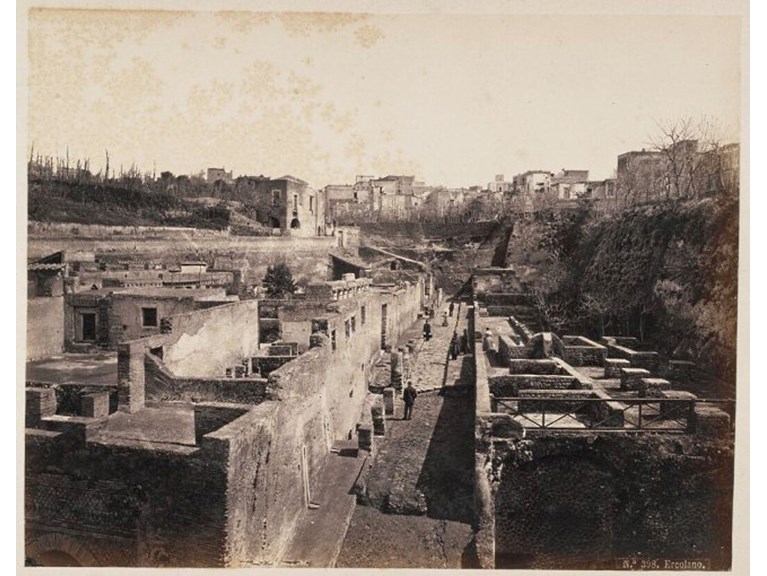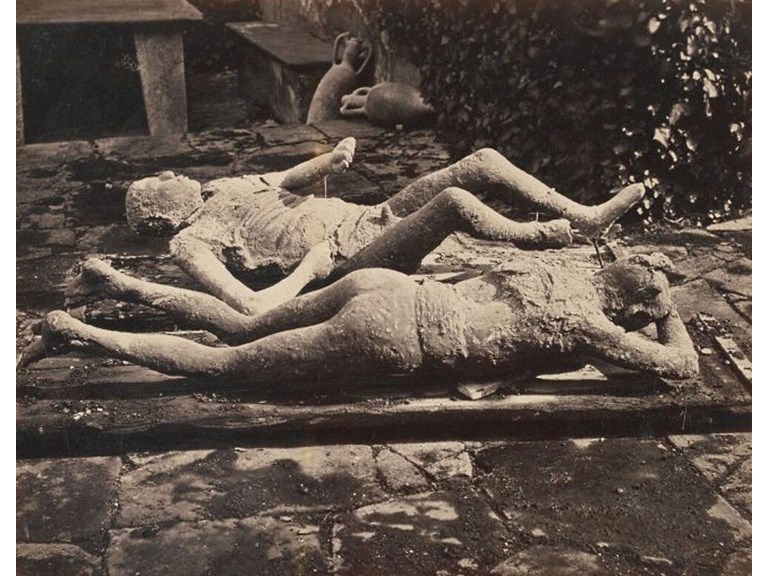Recreation of Vesuvius erupting
How do we investigate the past?
Activity 1: Vesuvius
All rights reserved. Please refer to this video’s YouTube page for licensing and permissions.
Audio described video available on request
Inquire: What happened when Vesuvius erupted?
- Draw up a table to record what is happening as you watch the video recreation of Vesuvius exploding.
- Now read the accounts of the explosion by an eyewitness: Letters of Pliny the Younger to the Historian Tacitus. Add to the table the details you learn from Pliny the Younger's account.
- What information is not provided by these two accounts? List questions you would like to ask an eyewitness. (For example: Why did some people remain in the city until the next morning when the pyroclastic flow killed them?)
- How reliable is Pliny the Younger as a witness?
- Are these accounts primary or secondary sources? Why? Compare a primary source with a secondary source talking about the Vesuvius explosion. How are they different?
Activity 2: Uncovering the past/archaeology
- Look at this picture of a Herculaneum street which has been uncovered from the ash column. What do you notice?
- Play the Vesuvius video backwards to better understand the layers of volcanic material that engulfed the city. Add a column to the table you used when you first watched the video and add the name of the material that covered the city at that time, for example, ash.
- How difficult do you think it would have been to dig through these volcanic layers of ash, pumice and lapilli? Is it like bitumen? Concrete?
- How did these layers protect the objects? What techniques did archaeologists use to uncover the remains of the city?
- List examples of the following types of evidence an archaeologist can uncover whilst digging up the past:
- objects
- images
- text
- architecture
- organic materials - How do archaeologists interpret these primary sources of evidence to determine what life was like in the ancient Roman Empire? What other sources of evidence would they need?
- Match the following experts to the type of evidence that is essential to their field of study:
- urban historian
- architectural historian
- forensic archaeologists
- art historian
- landscape archaeologist
- zooarcheologist
The body casts
Giuseppe Fiorelli, an archaeologist, poured liquid plaster into the hollows left in the ash when the bodies had decomposed to recreate the figures at the moment of their death.
This technique has allowed casts to be made of doors, windows, stairs and other parts of the houses in Pompeii.
- What is your reaction to body casts?
- Some people have issues about this process; there are lots of ethical questions here. Is it right to do this? Should archaeologists dig up the bones of dead people? Discuss these questions with a partner.
- What conclusions, about how people lived in the past, is an archaeologist able to draw by examining human remains?

